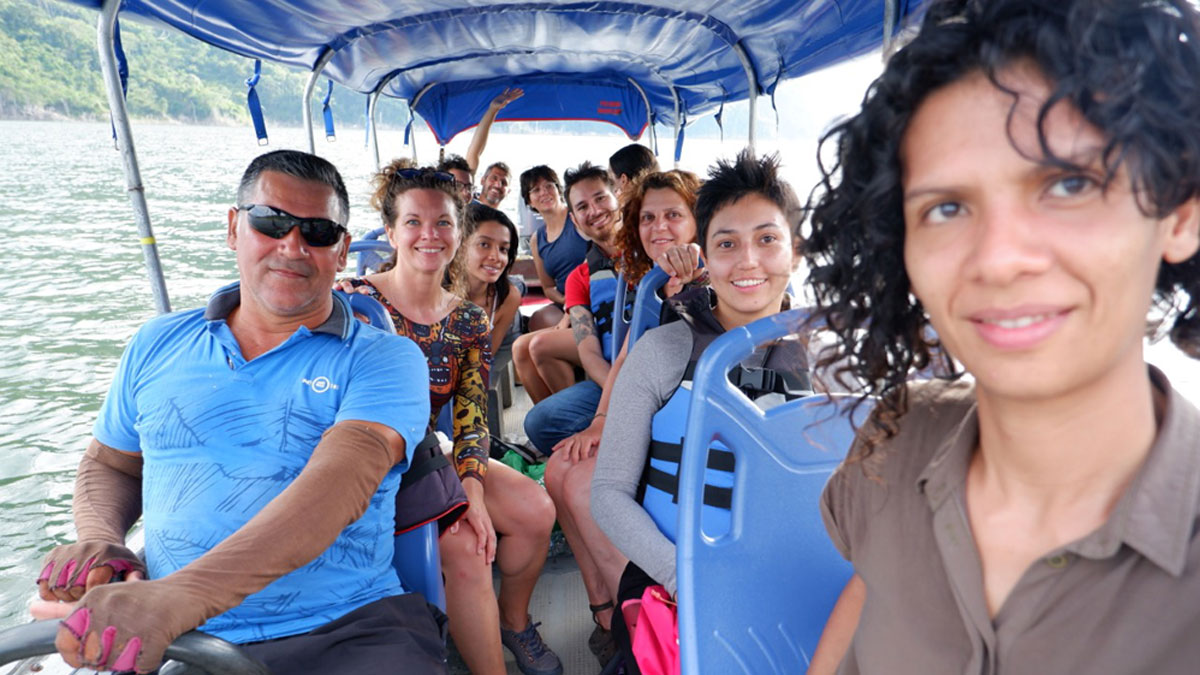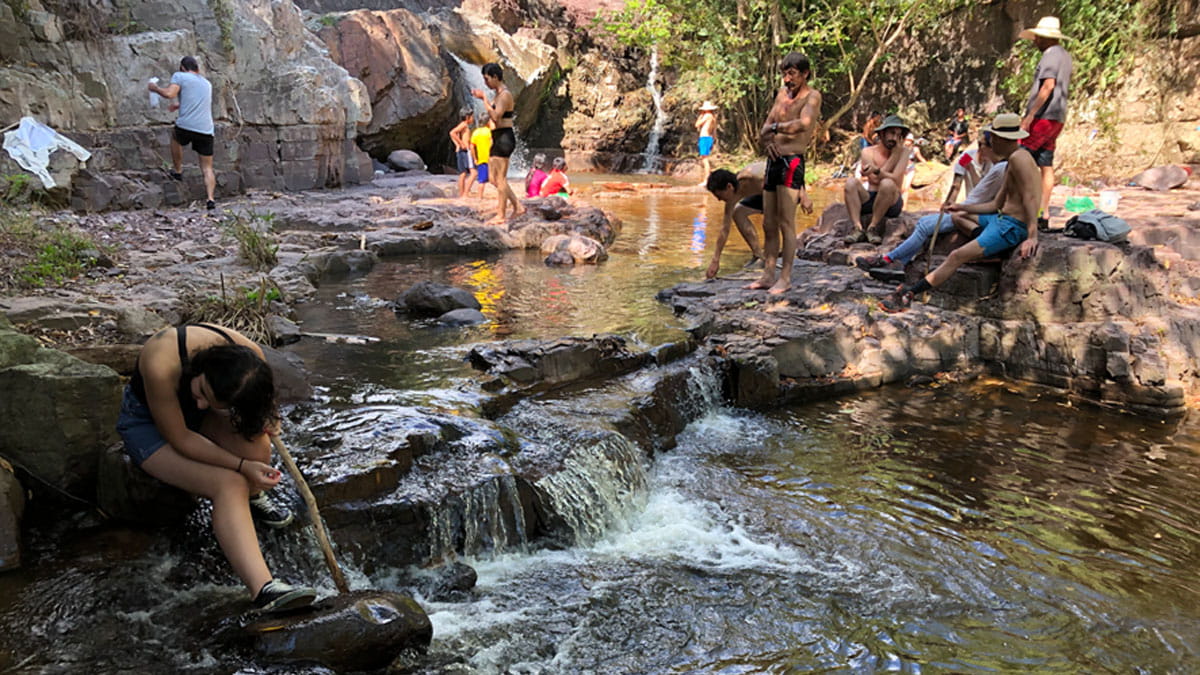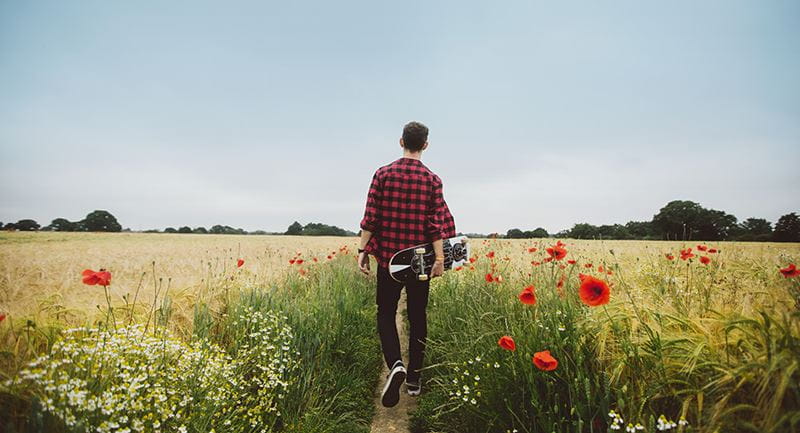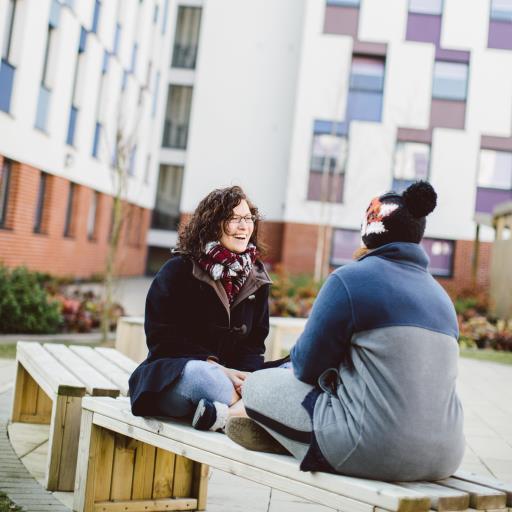Sustainable Rivers
Creative Methodologies for Social and Ecological Wellbeing
What is your research about?
With our project Sustainable Rivers: Creative Methodologies for Social and Ecological Wellbeing, we’ve been departing from arts practice to find ways to explore the impact of industrialisation on different river basins in Colombia. Whilst initially focussing on Colombia, these experiences also link up with our own rivers here in Essex as well as others in Peru. Our main contention is that the arts provide a way of bringing together different communities and different forms of knowledge that can help us think collaboratively – across disciplines – about the importance of both ecological and social wellbeing.
![]() Our main contention is that the arts provide a way of bringing together different communities and different forms of knowledge that can help us think collaboratively – across disciplines – about the importance of both ecological and social wellbeing.
Our main contention is that the arts provide a way of bringing together different communities and different forms of knowledge that can help us think collaboratively – across disciplines – about the importance of both ecological and social wellbeing.
Within that, we make a wager for the role of the arts as a mode of research that has perhaps unparalled capacity to create public spaces where we can gather and think about sustainability issues in ways that are also inspiring, challenging, enriching and exciting. By bringing together the arts and the sciences in this project, we are also taking a leap towards having those uncomfortable conversations across disciplines when you don’t quite understand what the other person does. I think these are important conversations to have as academics and as members of communities, and our project wants to try to find ways to understand each other through these encounters we have with rivers.
In doing this, we also invest in the experience of physically being present with rivers which evolved our methodology of embodied practice. Hence we’re looking at how we use the arts and arts practices as well as our own bodies to get to that point of communication, which is non-verbal too. We are interested in activating all of the senses and lots of different types of knowledge in these encounters with rivers. We built the first project around a series of itineraries where we walked, paddled and swam together in groups made up of scientists, artists, curators, geologists, biologists, arts students, farmers, anthropologists and people working with Fair Trade – a troop of people rambling through the countryside and having conversations that responded to the things that we were witnessing and experiencing. This enabled us to have a mobile transdisciplinary platform where we could ask questions that we, from our fields, don’t necessarily know the answers to, such as irrigation technologies, indigenous water cultures, the history of trade on certain areas or farming practices, for example. Listening to each other and to different bodies of water – which ranged from pure highland sources to contaminated dammed rivers – was a way to understand our interconnectedness in riverine ecologies. Water is always flowing through us so understanding that process from source to sewage is key.
What activities did your GCRF@Essex funding support?
For our project in Bucaramanga, Colombia, we began with an international exhibition of art projects, which bought established mid-career artists from Colombia, Venezuela and Peru together with BA Fine Arts students from Bucaramanga who we had been working with after teaming up with their lecturers so they would spend two semesters developing personal projects around water. Together with my Colombian project partner, María Fernanda Domínguez Lodoño, we curated the exhibition so that these established artists and emerging students would share this same space, which was a colonial house in the centre of town which was also our project base and where people could drop in and talk to us too.

We had this exhibition, hidro—grafías and in that space we also ran a public programme of interdisciplinary talks over three weeks with our team of people who were working with rivers and the environment in that region as well as in other countries. We held workshops with the artists Leonel Vásquez, Teresa Mulet and Alejandro Jaime, who spoke about their methodologies for engaging with territory, nature, climate change and sustainability, and workshops with the biologist Jimmy Rodríguez on deforestation and community-led botanical gardens. A lynchpin in our educational program was a three-day workshop by the curator and art theorist Ana María Lozano, about thinking beyond anthropocentric worldviews which addressed the philosophical foundations of the divide between humans and nature to ask so what happens if we start to think about matter as having consciousness and existence? What are the ethical and practical implications if we critique the human-centric perspectives which have supported forms of industrialisation that have been deeply damaging to the planet? How do artworks engage with these debates and produce new knowledge around them?
In addition to these workshops and talks, we had five unique fieldwork journeys. Together with El Bodeguero del Campo (a group of anthropologists, biologists and political scientists who have established a fair trade network for local farmers to sell their goods without intermediaries) we outlined routes through different river basins which we traced from the birth of the rivers, springing from the highland páramos (unique ecosystems of over 3,000 metres) in Colombia and flowing down through various valleys. On the five trips we explored the trajectory of different rivers to witness forms of contamination and human alteration of these ecosystems. After starting at one river’s source, our final fieldtrip was a major hydroelectric plant which had just been built to power extractive industries and urban centres. For that trip we took a boat up and down a river that had been dammed to create a reservoir that feeds the hydroelectric plant and which has drowned communities, farms, roads, erased artisanal fishing, altered the local climate and crop cycles, while also creating massive pollution. From what seemed like a picturesque lake, we sailed upstream to see the increasing load of sediment and mud trapped in the river, which had effectively become a pool of rotting matter that can no longer flow freely. As well as talking to local fishermen, we swam at two different parts of this river to experience those transformations to the body of water directly. This is just one example of how, through this type of fieldwork, we are trying to track the diverse lives of different bodies of water and the way that they have been altered by human impact.
The final event that marked the end of this phase of activities in our exhibition space was designed to generate a truly transdisciplinary platform to share reflections, experiences and initial research projects. We asked everybody who went on the fieldwork expeditions to send us any photographs they had taken, which we used to create this huge mosaic where we could unite everyone’s visions of these places we had been, creating a collective view of our journeys. On one trip we had taken botanical samples and then people were invited to invent fictional or imagined names based on how they perceived the plants. We also invited all participants to produce a project in some form – it could be a text, artwork, poems, or whatever they wanted – which we presented live as a public talk that interested our different voices, disciplines and research methodologies. Each person would stand up and speak about their project and if another participant saw a link with their project, they could interrupt the speaker at a convenient point and start talking about their project. Ultimately we were trying to find formats where we could pool all these things together and find ways to thread across our shared experiences, which were porous to each other’s responses, involvements and bodies of knowledge that we had been tapping into. These materials are now the basis for our first digital publication, which is currently being designed.
How do your GCRF funded projects support your wider research plans?
Broadly speaking, I’ve been making a shift in my own research methodologies, moving away from focusing on writing and filmmaking to get deeper into curatorial practice and more collaborative, transdisciplinary work where creative practice has strong role as a mode of research. In that sense, GCRF@Essex has really made it possible for us to establish a knowledge community that is now working across different countries, rivers and disciplines.
On that basis of really solid collaborative relationships, it’s now also possible to consolidate the work we did in Colombia through publications and dissemination. GCRF funding has been a powerful way to fund the pilot project in Bucaramanga, which was really intensive but also very productive for understanding what works and what is really feasible, and that’s extremely valuable for contemplating longer term projects. One immediate follow up is that this has enabled us to look for external funding and we recently submitted an application to the British Academy Writing Workshops programme. We also are aiming to begin working on editing a dossier of peer reviewed journal articles and bodies of practice-based research as a network.
In addition, we’re expanding the project into Peru this year, which is really exciting, reuniting existing members of the network and bringing in new colleagues and rivers. The value of these GCRF@Essex bids is both in kick-starting these things but then also finding a way to consolidate and sustain the group. Coming back together in person is vital to this process, as there is only so much you can do by email!
You have been looking at Bucaramanga in Colombia, how is your project benefitting this ODA country and which Sustainable Development Goals (SDGs) are being addressed?
We’re looking at various Sustainable Development Goals (SDGs), from SDG 4: Quality Education, SDG 6: Clean water and Sanitation and SDG 7: Affordable and clean energy, through to SDG 11: Sustainable cities and communities, SDG 13: Climate action and SDG 15: Life on land.
There are multiple items here and we’re addressing these SDGs through arts practice. We are not providing hard solutions – we are not capacitated for that – but what we hope to do is to thread more awareness of the importance of SDGs through arts education and practice and public platforms for dissemination through interdisciplinary conversations. In this way, emerging generations of artists will have a better grounding in the importance of looking to the sciences for information, engaging with real ecosystems and thinking about their problems using art as a platform to address these goals which impact on collective wellbeing, both human and non-human.
The benefits are linked with working with an interdisciplinary methodology in Colombia and Peru as this is not very common as an academic framework in those countries. Institutionally, the silos we might recognise here also exist there, so being able to create an environment where students have access to different forms of knowledges is, we hope, of benefit in those countries. This is why we work closely with local universities, such as the industrial University of Santander – an important local university in the Santander state – and the Escuela Municipal de Arte (Municipal Art School) in Bucaramanga, as well as connecting with colleagues from the Universidad de Los Andes, Universidad Javeriana, and the Pontificia Universidad Católica del Perú.
Your GCRF activities have created an interdisciplinary online network of artists and researchers engaged in research practice, how did you find your collaborators?
With my main collaborator in Colombia, María Fernanda Domínguez Lodoño (Director of Producciones, Bucaramanga), we met at a conference years’ back and have remained in contact as our lives have crossed at various points. Another collaborator is the artist and academic, Alejandro Jaime, who is represented by our own Essex Collection of Art from Latin America (ESCALA) and who was here at Essex at the start of 2019 doing a residency project on the River Colne. This was, let’s say, a pre-pilot for the Colombia project because we were doing practice research looking at the extractive industries on the Colne, contamination, the ecology of the river and arts traditions - so he’s now a firm collaborator and I do a lot of work with his institution, the Catholic University in Peru, where I have just been on my research leave.
María Fernanda Domínguez Lodoño basically bought a really rich network to the project. She’s a young emerging art historian and curator who said these are the people we need to bring on board – some of which we both knew through other networks, artists and lecturers for example – to unite these incredible institutional and friendship links, so we had all of these moving parts in the mix.
You’ve just been awarded further GCRF@Essex funding for ‘phase two’ of Sustainable Rivers. Tell us a bit more about the next stages of your work and what you are hoping to achieve?
The main objective is to re-unite some of the core group of this interdisciplinary network in Peru, which will enable us to make our conversations sustainable and to revisit the work that people had in progress at the time of our first encounter in Colombia. We also want to find a case study in Peru where we can work together so we’ll be looking at different routes to try to understand some of the particularities of water stresses in Peru, which has some overlap with Colombia as well as some real distinctions. The city of Lima has over 12 million people for example, and it sits right in the desert on the coast and is desperately in need of water. However, at the same time, glacial retreat means that there isn’t necessarily a sustainable future for water resources to feed these big populations nestled along the coast. We want to dig in to those particular challenges a bit more by also bringing on board new colleagues at the Catholic University, our main partner on this project, where there is a lot of expertise in topics such as water legislation and the cultures of water. So our immediate goal is to reunite, expand and explore!
How did you prepare for the application(s)? What were the main challenges?
Some of the main challenges are logistical factors, such as finding ways to work across different time zones. WhatsApp has become my best friend because it’s provided an easy way to move forward quickly by bypassing long emails. This is really helpful when the turn-around for project applications can be quite tight and there are lots of things going on in everyone’s lives as well.
Anticipating costs can also be tricky in these sorts of projects where the reality of the country you’re going to be working in is so different to here and there are many services (such as buying catering equipment for the events) which it is only possible to do in-country.
The application form itself is brief and pragmatic, so the hardest thing is trying to get it to fit on six pages! I appreciate that the team at GCRF@Essex have made an effort to make it feasible for colleagues and my second application was easier as I knew how the form was laid out.
What tips would you give to other people applying?
Don’t do too much. Whilst my project in Colombia was exciting and enriching, it was also over-ambitious, intense and exhausting. Plus, we really stretched the funding as far as we could go! So, my advice is to make it manageable and focus on building the human relationships that really underpin collaborative work.
)




